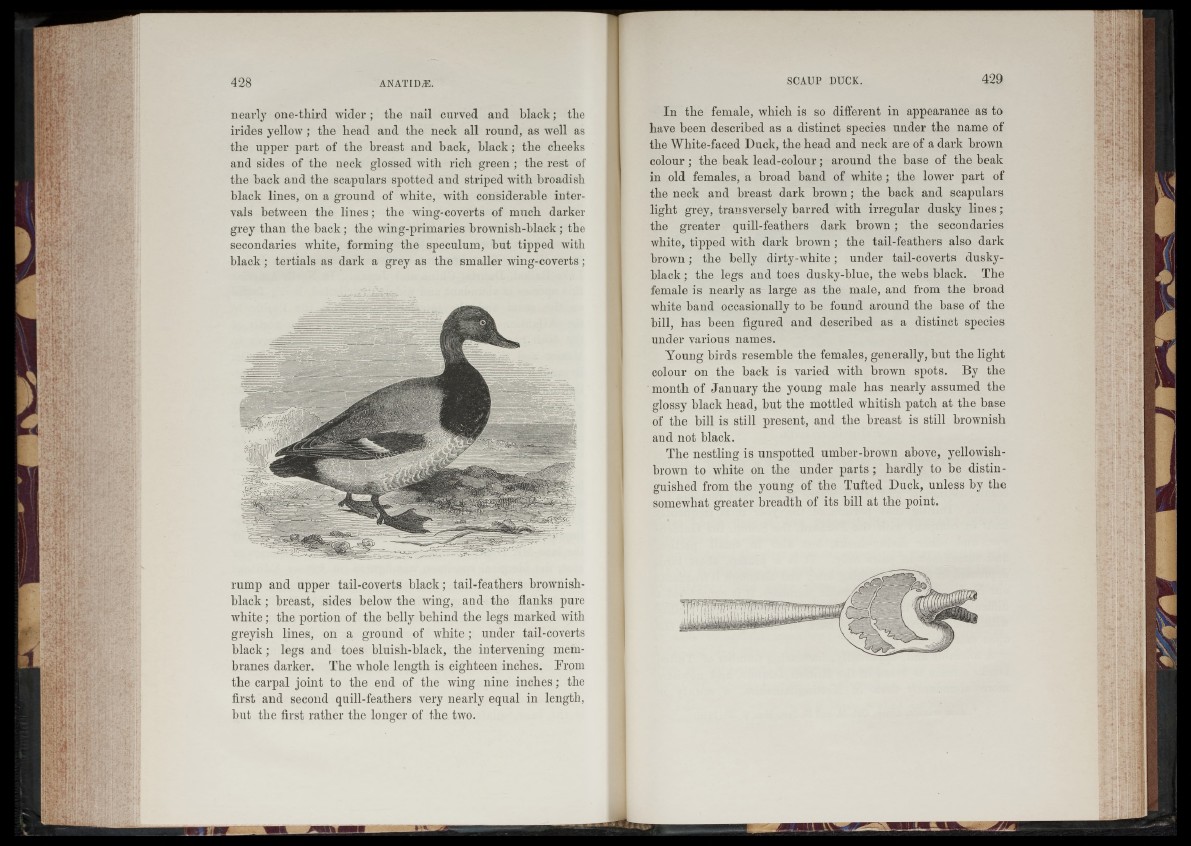
nearly one-tliird wider; the nail curved and black; the
irides yellow ; the head and the neck all round, as well as
the upper part of the breast and back, black; the cheeks
and sides of the neck glossed with rich green ; the rest of
the back and the scapulars spotted and striped with broadish
black lines, on a ground of white, with considerable intervals
between the lines; the wing-coverts of much darker
grey than the back; the wing-primaries brownisli-hlack; the
secondaries white, forming the speculum, hut tipped with
black ; tertials as dark a grey as the smaller wing-coverts;
rump and upper tail-coverts black; tail-feathers brownish-
black ; breast, sides below the wing, and the flanks pure
white; the portion of the belly behind the legs marked with
greyish lines, on a ground of white; under tail-coverts
black ; legs and toes bluish-black, the intervening membranes
darker. The whole length is eighteen inches. From
the carpal joint to the end of the wing nine inches; the
first and second quill-feathers very nearly equal in length,
but the first rather the longer of the two.
In the female, which is so different in appearance as to
have been described as a distinct species under the name of
the White-faced Duck, the head and neck are of a dark brown
colour ; the beak lead-colour; around the base of the beak
in old females, a broad band of white ; the lower part of
the neck and breast dark brown ; the back and scapulars
light grey, transversely barred with irregular dusky lines;
the greater quill-feathers dark brown; the secondaries
white, tipped with dark brown ; the tail-feathers also dark
brown; the belly dirty-white; under tail-coverts dusky-
black ; the legs and toes dusky-blue, the webs black. The
female is nearly as large as the male, and from the broad
white band occasionally to be found around the base of the
bill, has been figured and described as a distinct species
under various names.
Young birds resemble the females, generally, but the light
colour on the back is varied with brown spots. By the
month of January the young male has nearly assumed the
glossy black head, but the mottled whitish patch at the base
of the bill is still present, and the breast is still brownish
and not black.
The nestling is unspotted umber-brown above, yellowish-
brown to white on the under parts ; hardly to be distinguished
from the young of the Tufted Duck, unless by the
somewhat greater breadth of its bill at the point.
si?
jjjllfL.
i
W'It: W pi'>4 ■" ii i i
p m
! Si ill!!*1
,
(jjBij> »II.. "
'111 1' !1 1I1 1111 '
„, .. ,' : i-l‘:"
4
III
. Ml I
I
;
1
. lr a i